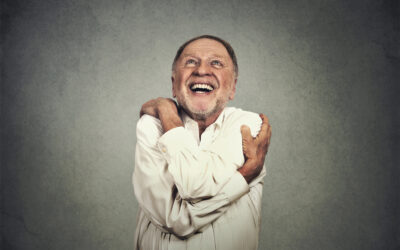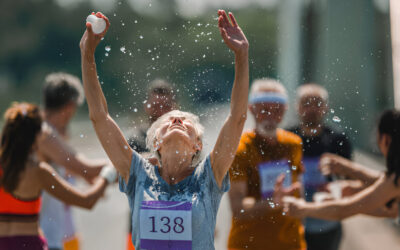Continuing Somatic Education and Feldenkrais® Method
Somatic education started taking hold in the early-to-mid 1900s with the development of the Feldenkrais Method®, Alexander Technique, Rolfing, Hanna Somatics and much more.
Most somatic education programs explore developmental movements and access the power and plasticity of the central nervous system to improve human function by increasing self-awareness in movement. These programs attempt to “de-program” habitual fixations following injury, illness, posture, and faulty learning that result in counter-productive movements and poor joint alignment. By reconnecting a person to their natural capacity for feeling, thought, and action, somatic education programs improve movement coordination and the collaborative functions of the skeletal, muscular, and nervous systems.
Thomas Hanna, a student of Dr. Feldenkrais, is often recognized for coining the term “somatic,” which comes from the Greek word sō-mă, meaning the body. Somatic education can be defined as individual development through movement exploration (both physical and emotional), kinesthetic sensation, and awareness. The personal living experience of learning through one’s body is the main element covered in somatic education. It must be explored creatively without judgment for improved movement patterns. Only then will its positive impact extend beyond the individual and into the world.
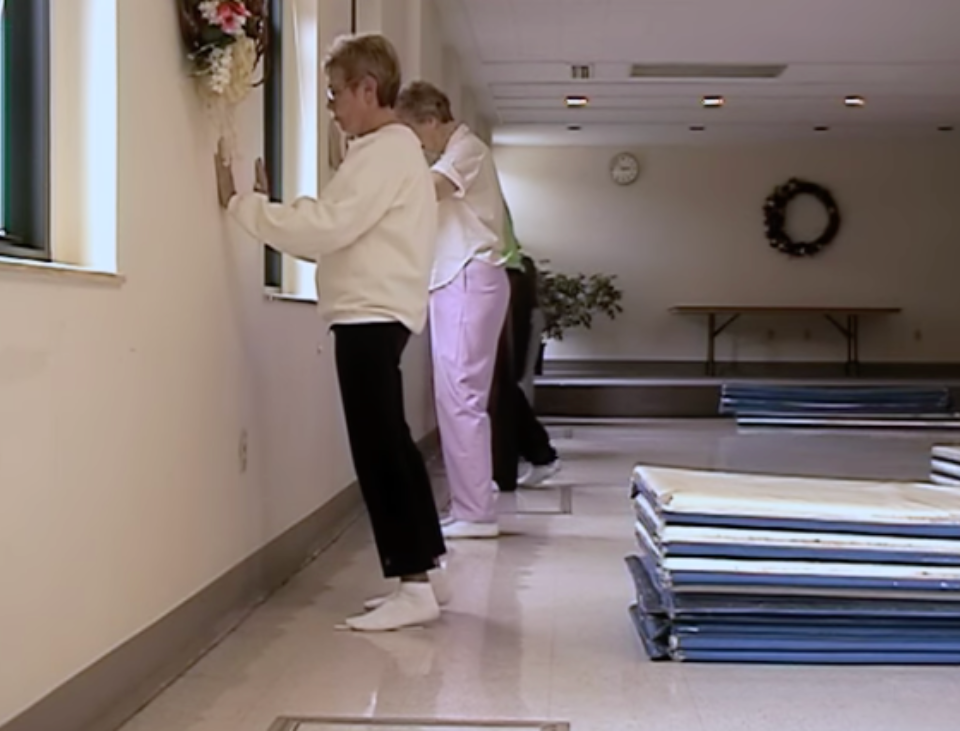
Because inefficient movement patterns and old injuries can contribute to osteoarthritis, tendonitis, bursitis, degenerative joint issues, and spinal disorders, the field of somatics has various applications and countless benefits. Cultivating the natural state of being, and relaxed readiness, responses from one’s physical, emotional, and mental faculties emerge spontaneously and in proportion to environmental demands.
At present, we offer several ongoing Movement Intelligence programs, including Bones for Life®, and Walk for Life®, the Feldenkrais® Method, and Integral Human Gait™.
These programs are for clients who want somatic education for improved awareness, leading them to quality and pain-free movement patterns enhancing function.
Continuing education plays a vital role in ensuring competency within a profession or certification program. We are dedicated to helping individuals access reliable, credible, and high-quality continuing education throughout their careers. Montgomery Somatics has experience offering continuing education units for Massage Therapists/Bodyworkers (NCBTMB Certification), Physical Therapists, Occupational Therapists, Athletic Trainers, and Personal Trainers (ACE) in the Bones for Life® Segment Classes and Integral Human Gait™ Workshop. We also provide private and group mentoring sessions. Contact us for further information.
Experience the Feldenkrais® Method
The Feldenkrais® Method utilizes several aspects of life: awareness, movement, sensation, and environment a period, These elements will stimulate the nervous system to significantly impact physicality and emotions.
Using a series of slow, gentle, and varied movements, clients learn to improve their movement quality, adopting more functionally efficient movement patterns and improving the quality of their lives.
There are two ways of learning and experiencing the lessons: private individual sessions and open group sessions. Each session engages the nervous system rather than targeting a musculoskeletal focus. Sessions do not focus on pushing people to achieve, exceed, or strain. Instead, the key to better performance, better movement, better function, and less pain is the ability to learn how to improve and refine our ability to sense differences. This level of learning provides an ever-expanding repertoire of choices regarding how a person might move instead of teaching them the ‘right’ way to move. To learn more about the Feldenkrais® Method, you can visit the official Feldenkrais® website.
Our early movement patterns and development as babies underlie the foundation of Moshe Feldenkrais’ method. Finding the floor, chair or ground underneath you, experiencing the reliable support of the environment, engaging in somatic learning principles of curiosity, exploring, and repeating can lead to functional movements that are more refined, effortless, painfree, and pleasurable.
This course goes beyond the customary study of characteristics of stance and swing phases of gait. By using Integral Human Gait Theory™, we explore a comprehensive map that surpasses the existing knowledge in physical medicine, therapy, rehabilitation, and sports training. The “how” of walking drives physical comfort, emotional well-being, security, and happiness.
Using the sensory learning platforms of the Somatic Functional Mobilization™, Feldenkrais Method®, and Bones For Life®. you will study and learn the interplay of alignment and pressure through ground reaction forces to answer the following questions:
What impact does gait have on the neck, shoulder, and upper/lower back health?
Why is walking beneficial only if it is balanced?
In what ways does gait resonate with the rhythms of the body
Gait for Wild Human Potential: Learning Themes and Objectives
Ground Reaction Forces: The Relationship of Pressure and Alignment
- Description of the development, phases, and sequence of movements in the gait cycle.
- Articulating the process of horizontal rotation of the pelvis which frees the foot in the rear and manages the forward leg in the single-leg stance phase of gait.
- Demonstration of the Swing Leg, which powers the “Spring” of the Stance Leg.
- Differentiating how the lumbar spine accepts a position of neutrality while performing the swing and stance phase of gait.
- A personal appreciation experience of how a vibrant gait adds to overall well-being.
The Re-organizing Power of Counter-Rotation
- Organizing your head, shoulder girdle and pelvic girdle in a rotation or counter-rotation movement pattern.
- Learn to distinguish how rib mobility is important during both the swing and stance phase of gait.
- Realize the value and role of rhythm in contributing to a smooth and efficient gait pattern.
The Dynamic Interaction Between Posture and Gait
- Discover the potential and power of your abdominal muscles’ capacity for uprightness.
- Completing the one movement process using the gluteals and/or hip adductors to re-orientate your midline trunk awareness.
- Assess the kinetic chain for the most effective entry point of change for creating enhanced freedom and ease of movement while walking.
- Skillful and powerful demonstration of the ability to stand on one leg.
- Demonstration of 3 ways to align the C7 vertebrae over the forward leg in the single-leg stance phase of gait.
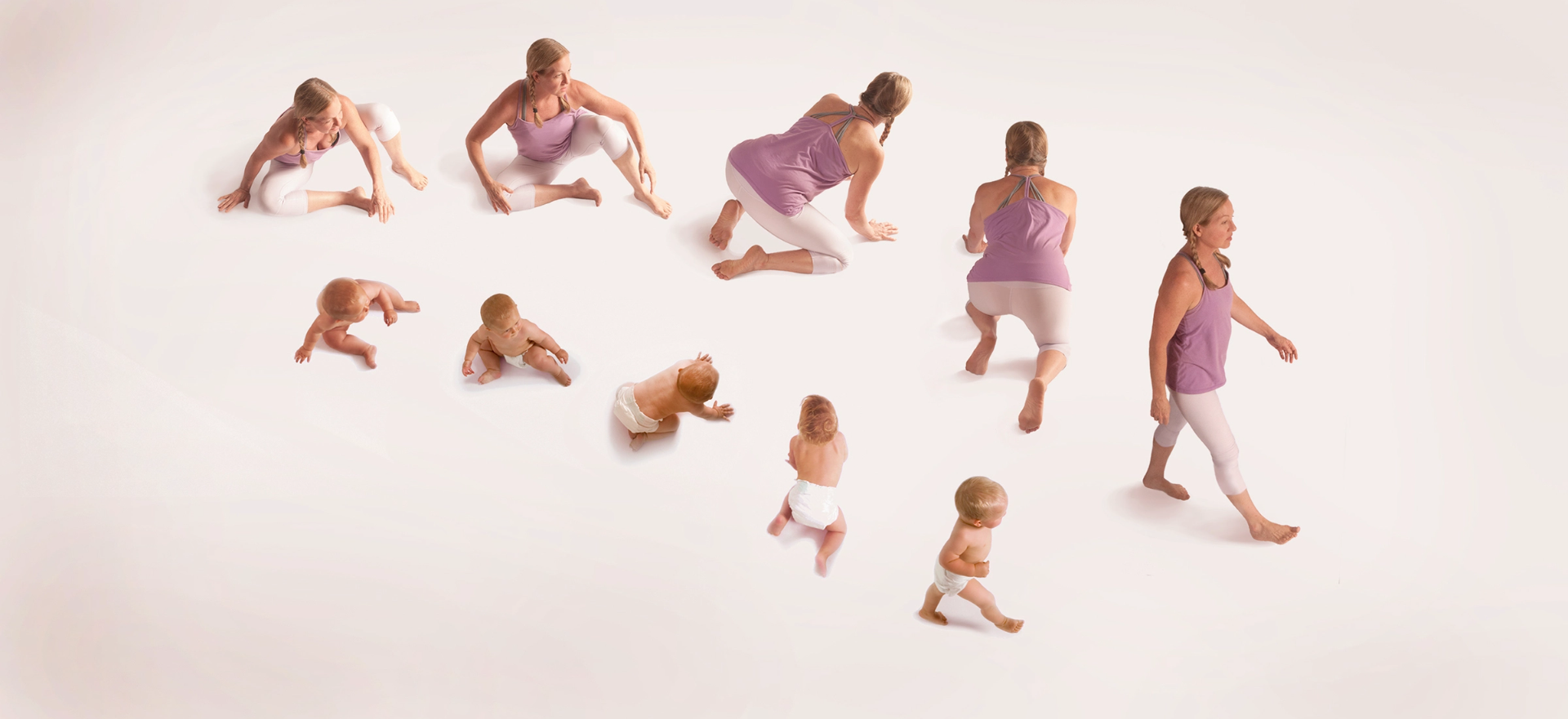
 Restoring Postural Reflexes and Balance
Restoring Postural Reflexes and Balance
Vital and fundamental to life, your balance lies at the center of your ability to move safely and function independently. Optimal stability is usually associated with the ability to stand on one leg for a certain length of time or the involuntary and instantaneous ability to maintain a stable posture when challenged. The brain uses signals from our eyes, ears, ligaments, muscles, and spine to choreograph a set of balance reflexes to control our muscles, right down to our toes. Postural Reflexes are a specific form of unconscious coordinated muscle activity and are our first line of defense against an unexpected destabilizing misstep, turn, push, or trip.
But what if there is a glitch in the automatic signal-response loop and the balance reflexes fail? As a result, we fall. If we’re lucky, we might avoid fall-related injuries. Research indicates that most people are not so fortunate and sustain a sprain, fracture, or head trauma. And most will go on to fall again within the next six months.
Integral Human Gait®: Restoring Postural Reflexes and Balance uses the sensory learning platforms of the Feldenkrais Method® and Bones for Life®, to help both the professional and the layperson both discover the cause-and-effect relationship between poor or absent patterns of movement and reflex activation.
- Describe three critical differences between Primitive and Postural Reflexes.
- Explain the differences between a righting reflex and an equilibrium reaction.
- Demonstrate three somatic movement explorations that target spinal movement limitations, helping to decrease fall risk.
- Describe the current understanding of why balance erodes over a lifetime.
- Describe the signal-response loop embedded in all reflexes.
- Recognize the difference between a protective reflex and a postural reflex.
- Understand the relationship between the eyes, upper cervical spine, the center of mass and surface area of the feet, their impact on reflex activation and the impact they have on the signal-response loop embedded in all reflexes.
- Perform three somatic movement explorations to improve the counter-rotation of the upper and lower cervical spine.
- Explore alternative ways to assess balance.
- Demonstrate three somatic movement explorations that improve the righting reflex.
Healing the Dysfunctional Triad
- Understand the kinetic chain and the dysfunctional triad that exists between loss of ankle and thoracic spine mobility and pelvic girdle mechanics.
- Experience the 3-D motion of the pelvic girdle and foot that organizes the leg for a dynamic single-leg stance needed in activities involving balance and power.
- Discover the value and role that rhythm plays in contributing to the stepping reflex.
- Discover the value and role that somatic movement exploration plays in contributing to a smooth and efficient gait pattern and in exercise
- Experience a personal appreciation of how a vibrant gait contributes to a positive perception of general health, well-being, and safety.
- Understand how somatic-based movements can positively influence different types of balance problems.
- Differentiate what the brain thinks is midline vs. what the student believes is midline.
- Understand the relationship between the eyes, upper cervical spine, the center of mass and the surface area of the feet, and their impact on reflex activation.
The Partnership of Rolling and Turning
- Differentiate how the pelvic girdle and ankle joint accept a position of counter- rotation during the stance phase of gait to avoid falling when looking over the shoulder.
- Understand and experience how the neurodevelopmental sequence and changes in the surface area impact balance safety and postural reflexes.
- Distinguish the kinetic chain differences between falling during turning vs. falling during walking that lead to increases in hip fracture risk.
- Understand how somatic-based movements can positively influence different types of balance problems.
- Understand the relationship between the eyes, upper cervical spine, the center of mass, and the surface area of the trunk, and their impact on reflex activation.
- Understand how simultaneously improving the quality of walking improves postural reflexes.
- Demonstrate the difference between rolling, turning, and walking.
- Appreciate how the qualitative experience of safety, comfort, and curiosity reduces the fear of falling.
- Understand how the quality of balance relies on the interaction of physiological and emotional systems.
- Discover how to unlock the mobility of the ribs and the thoracic spine needed during gait and activation of the equilibrium reaction.
- Understand how simultaneously improving the quality of walking improves postural reflexes.
- Recognize the way you stand on one leg makes a difference and appreciate how you stand matters even more.
- Learn how to stabilize the body under increasingly difficult circumstances.
- Differentiate what the brain thinks is midline vs. what the student believes is midline.
- Demonstrate three somatic movement explorations that target spinal movement limitations that reduce the fear of falling.
Our Latest Blogs
Balance Assessment: How Do You Measure Up?
The following mobility and balance test material is taken from draft manuscript excerpts of my...
Somatic Exercises for Anxiety: Gentle Practices to Reconnect with Your Body
You are not alone in feeling the weight of anxiety in your body. You may notice tightness in your...
How to Age Gracefully: Lessons from a 90-Year-Old Marathoner
“Aging is a learning process, not a loss. A change in energy or attention doesn’t mean that...
Any questions?
Fill out the form below and we’ll get back to you as soon as we can.
Sign up for our newsletter.
Sign up for wellness and movement tips and upcoming events.



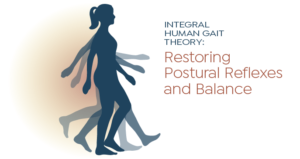 Restoring Postural Reflexes and Balance
Restoring Postural Reflexes and Balance
